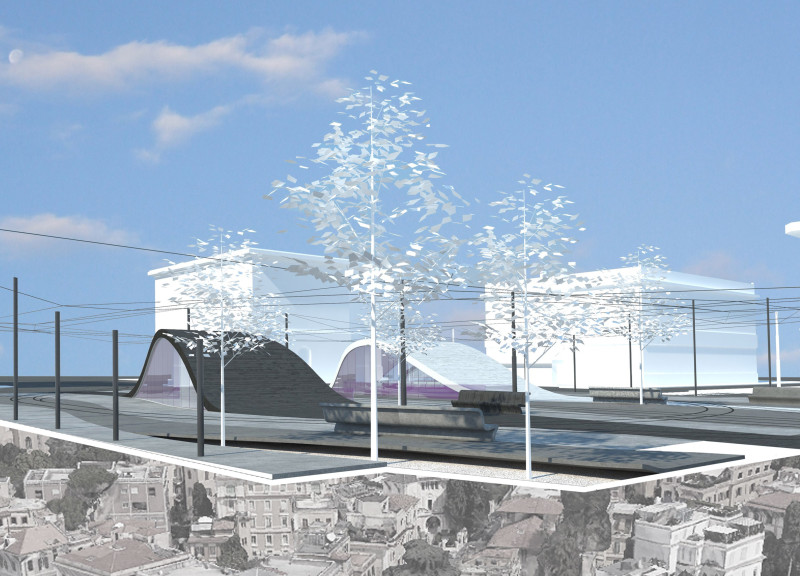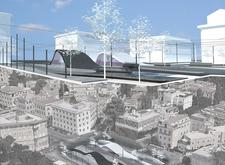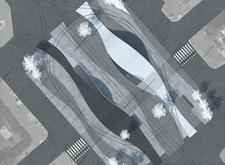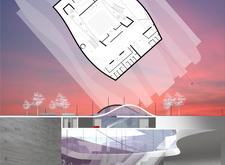5 key facts about this project
Functionally, the project serves multiple purposes, incorporating versatile spaces that can adapt to diverse community needs. It includes an entrance hall, which acts as a welcoming point, encouraging visitors to explore the various activities hosted within. The spaces within the building are distinct yet interconnected, facilitating a natural flow that enhances the user experience. Key areas such as conference rooms, multifunctional halls, and a café/bar have been strategically placed to maximize interaction and usability. The design of these spaces not only considers their individual functionality but also emphasizes their role in supporting communal activities.
Material selection plays a crucial role in this architectural design. A primary component is concrete, chosen for its durability and adaptability, which allows for the creation of organic shapes that are central to the project’s aesthetic. Coupled with expansive glass elements, the design emphasizes transparency and natural light, linking the interior spaces with the outdoors. These materials are complemented by self-cleaning photo-catalytic concrete, which highlights a commitment to sustainability. This eco-friendly approach resonates with contemporary architectural ideas focused on environmental responsibility. Additionally, the integration of triple-glazed windows contributes to energy efficiency and occupant comfort by reducing thermal loss, illustrating how design can address climate considerations.
The unique design approach is evident in the fluidity of the building's form, which departs from traditional architectural lines and introduces an organic rhythm that resonates with the site. This design philosophy promotes a sense of movement, suggesting a living entity rather than a static structure. By providing a seamless transition between indoor and outdoor areas, the project seeks to encourage interaction with the surrounding community and natural environment. Green spaces and pathways interspersed throughout the site reinforce this connection, creating inviting areas for people to gather and engage.
Attention to detail is apparent in the thoughtful integration of technology and design. An energy-efficient LED illumination system is employed not only to reduce power consumption but also to enhance the ambiance of the public spaces. Furthermore, the organization of the layout facilitates easy navigation, ensuring that users feel comfortable and oriented as they move through the building.
In summary, this architectural project represents a thoughtful embodiment of modern design principles while prioritizing community engagement and sustainability. The fluid architecture, innovative materials, and functional diversity all contribute to a space that is meant to be experienced rather than merely observed. For a deeper exploration of this design, including detailed architectural plans, sections, and further architectural ideas, the project presentation is available for review. Through examining these elements, one can gain a comprehensive understanding of the architectural intentions and design outcomes that define this unique project.


























